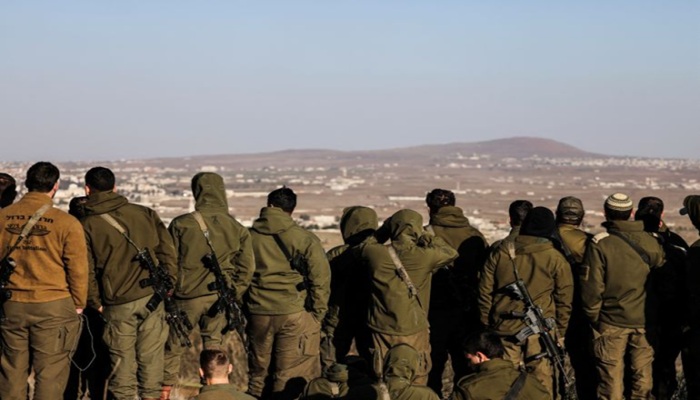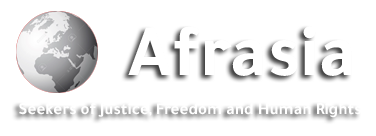
Afrasianet - Israel has not only exploited the fall of the regime in Syria by imposing its control over the buffer zone established under the post-October War ceasefire agreements in the Golan Heights, but has sought to expand its presence in a major buffer zone up to Jordan's border. Not only did it exist and declare it temporary until the situation in Syria stabilized, but it also announced that its occupation of some areas would remain permanent.
Worse still, it is looking to establish a kind of civil-military administration in its new areas of occupation and to regulate the lives of the people there by linking them to its economy by opening up employment prospects. The Israeli vision of this occupation has been exacerbated by playing on the sectarian diversity in southern Syria, especially the claim to protect the Druze in Suwayda and its villages.
All this would not have happened before Israel destroyed the military capabilities of the Syrian army by destroying airports, aircraft, ports, warships, strategic warehouses, and research and science centers. She believed that all this could pass without appropriate Syrian reactions based on the fact that the Syrians are engaged in rearranging their situation and the approach they declared not wanting to clash with the surrounding forces.
But the vigor of the Syrian people, their history, their attachment to their homeland and their knowledge of their enemy have not left Israel with a chance. Demonstrations have erupted in most of the newly occupied territories, and voices have begun to rise demanding resistance to expel the "enemy" and even drawing inspiration from the experience of the Gaza Strip and southern Lebanon.
This is particularly the case in demonstrations in the Syrian capital, demanding resistance to the Israeli occupation of the south and its attempt to divide the homeland.
After the recent raids, night demonstrations took place in the city of Damascus following the Israeli air raids on the south, where dozens of young men denounced the aggression, and the demonstrations roamed Mezzeh to the Umayyad Square in the center of the capital.
Protection and frustration
Of course, this does not appeal to Israel, as Prime Minister Benjamin Netanyahu announced last Sunday, during the graduation ceremony of the combat officers course, that the army forces will remain in several locations in Lebanon and Syria, and stressed, "We demand the complete evacuation of southern Syria from the forces of the new regime." "We will not tolerate any threat to the Druze community in southern Syria."
"IDF forces in Syria will remain in the Mount Hermon area and in the buffer zone for an unlimited period of time, to protect our towns and thwart any threat. We will not allow HTS forces or the new Syrian army to enter the area south of Damascus."
Israeli commentators also clearly explained the meaning of Netanyahu's words, saying that he explicitly meant that he was demanding the stripping of the Golan region up to the border with Jordan in the south and from the east to the crossing to the Suwayda area, known as Jabal al-Druze. In this area, Netanyahu is demanding that Hay'at Tahrir al-Sham (HTS), which now controls Syria, not even the New Syrian Army, a coalition of armed Islamist organizations that have joined Hay'at Tahrir al-Sham and its leader, Ahmad al-Shara'.
In recent days, Israel has launched a series of air raids on Damascus, Daraa, flexing air muscles in Suwayda and ground incursions into southern Syria, focusing on the provinces of Quneitra and Daraa, with the stated aim of preventing the region from becoming a new resistance front. These raids and incursions included the destruction of abandoned barracks and the theft of heavy machinery, with assertions that the aim was to end the armed presence in southern Syria.
Threats
Israeli newspapers reported that the army carried out dozens of raids in Syria's buffer zone, which led to the discovery and destruction of weapons, including a large cache of guns and ammunition discovered during night operations. The forces are deployed at strategic points in the area, allowing them to respond quickly to potential threats, it said.
Israeli Defense Minister Yisrael Katz declared that the purpose of the attacks was "to prevent southern Syria from becoming a version of southern Lebanon" and warned that any attempt by the Syrian army or "terrorist organizations" to entrench themselves in the "safe zone" would be met with a military response.
"Every attempt by the new Syrian army to build military capabilities in the south will be met with fire. The IDF will not allow hostile forces to be stationed and present in the security zone in southern Syria, from here to Damascus, and we will act against any threat."
"We will work to strengthen relations with friendly residents in the region, with a focus on the Druze population, who are the brotherly residents of our Druze brothers who are fighting alongside us in the State of Israel," Katz said. He concluded that "the Israeli army will remain on top of Mount Hermon and in the buffer zone for an unlimited period to ensure the security of the settlements of the Golan and the north and all residents of the State of Israel."
Israeli hints – on the lips of Netanyahu and Katz – refer to an old Israeli plan announced after the 1967 war aimed at establishing a Druze statelet in the area between Damascus and the Palestinian border in the so-called Damascus-Sweida axis. "We will strengthen relations with the friendly people of the area, for good-neighbourly relations, with a focus on the large Druze population," Katz said. The IDF will remain on top of Mount Hermon and in the buffer zone for an unlimited period to ensure the security of the settlements of the Golan Heights, the north and all residents of the State of Israel."
The Israeli newspaper Maariv reported that Israel supports "and may push for a move towards Druze autonomy, which would form a barrier between Greater Syria and the Israeli border. In Druze social media in Syria, there is talk of an intention for the Israeli army to provide the security umbrella and be the military force in the area, while the Druze will manage the daily municipal activities."
Druze workers
Maariv also noted that this sparked talk of "opening the border to allow the movement of Druze workers from Syria to the Golan. Ostensibly, the agreement suggests that all parties benefit from this move. First, Israel will benefit from security. Second, Syrians are among the best construction workers in the Middle East, and they also have good knowledge and ability as land workers and farmers.
The basic salary in Sweida is $300 per month. "The opening of the border will allow Syrian Druze workers to be employed at lower costs than those currently paid in Israel to workers from Thailand, China and India."
Ron Ben-Yishai, a military commentator in the Israeli newspaper Yedioth Ahronoth, tried to explain what was happening in southern Syria, writing that October 7 led Israel to develop a plan that includes three defense systems on the borders of Gaza, Lebanon and Syria: fortifications and obstacles inside Israel, an advanced defense system inside enemy territory, and a demand for the disarmament of the adjacent border areas.
This is the true meaning of Netanyahu's demand for the demilitarization of an area south of Damascus. He considered that the new Israeli defense system In Syria, "it consists mainly of monitoring fortifications, established on controlled territory and patrols, but unlike southern Lebanon, the IDF has relations with the population (southern Syria) and to be present at the top of Syria's Mount Hermon, there is also important intelligence and operational value."
In response to the statements and hints of Netanyahu and Katz, demonstrations and protests were organized in many areas of southern Syria condemning these threats to control the areas of southern Syria, disarm them, and prevent the presence of Syrian forces there.
The demonstrations were concentrated in the areas of Quneitra and Busra al-Sham, in the countryside of Daraa and the demonstration square in Suwayda, and participants chanted slogans attacking Netanyahu and Israel, and demanding withdrawal from the occupied Golan. Participants rejected Netanyahu's statements regarding support for the Druze community, declaring that the Druze are an essential component of Syrian society, and participants from the popular Sweida movement called on the Druze sheikhdom to respond to Netanyahu's statements regarding providing them with protection.
It is well known that Israel, unlike most countries in the world, did not accept the Syrian administration or the Syrians seeking to arrange their situation themselves. From the very first moment, it took advantage of the situation and declared its rejection of the new Syrian leadership under the pretext that it was a terrorist. Despite this, the new Syrian leadership organized meetings with all segments of Syrian society, according to the principle that Syria is a homeland for all and that it will never accept division. The National Dialogue Conference, which concluded yesterday, focused on the principles of protecting minorities and rejecting partition or federalism.

